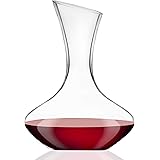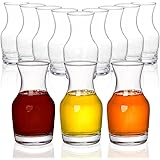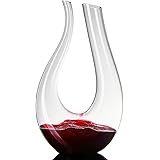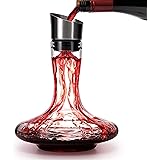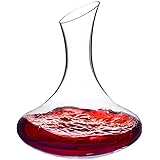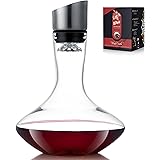Imagine, if you will, the hushed anticipation in a Michelin-starred dining room. A guest, perhaps celebrating a significant milestone, has entrusted their evening’s liquid journey to the sommelier. With a practiced flourish, the bottle is presented, a brief narrative shared, and then, with an almost imperceptible grace, the ritual of service begins. This moment, often understated yet profoundly impactful, is where expert sommelier technique truly shines. The video above, with its simple yet powerful affirmation of “Amazing, yeah!”, undoubtedly captures a glimpse of this mastery in action—a testament to skill honed over countless bottles and innumerable hours of study.
The journey to becoming an expert sommelier transcends mere memorization of regions and vintages; it is a holistic immersion into the art and science of wine, culminating in a refined technique that elevates the entire dining experience. It’s about performing at an apex, where every action, every word, every subtle movement contributes to a symphony of service. Like a concert pianist whose fingers dance effortlessly across the keys, an expert sommelier executes complex tasks with fluid precision, making the intricate appear simple.
Deconstructing Expert Sommelier Technique: More Than Just Pouring Wine
At its core, expert sommelier technique is a meticulous blend of deep knowledge, sensory acuity, and impeccable hospitality. It’s not simply knowing what to do, but how to do it with an unparalleled level of finesse. This mastery transforms a functional act into an unforgettable part of the guest’s narrative.
The Art of Service: Precision and Grace at the Table
Consider the delicate dance of tableside service. It’s an intricate ballet where every step is choreographed for maximum impact and minimal intrusion. The presentation of the bottle, for instance, is not a cursory display but an invitation, a respectful introduction to the liquid treasure within. An expert sommelier doesn’t just show the label; they present it with an articulate, concise summary, allowing the guest to confirm their choice with confidence.
-
Decanting with Purpose: Decanting, often misunderstood as a purely performative act, is a prime example of expert technique. It’s a strategic decision. Is the wine young and needs aeration to soften its tannic grip, much like untangling a tightly coiled rope? Or is it an aged grand cru, requiring careful separation from its sediment, akin to gingerly sifting gold dust from sand? The sommelier’s judgment, the choice of decanter, and the controlled pour—allowing the wine to gently cascade down the vessel’s sides to maximize oxygen contact without undue agitation—are all facets of this precise skill.
-
Temperature Control: The Unsung Hero: Serving wine at its optimal temperature is paramount, yet often overlooked. A robust Cabernet Sauvignon served too warm can taste flabby and alcoholic, while a crisp Sauvignon Blanc that’s too cold loses its aromatic expression, becoming muted and uninviting. An expert sommelier understands that temperature is the silent architect of flavor, ensuring each bottle reaches the table at precisely the point where its profile sings. They consider the ambient room temperature, the time the wine has been out of the cellar, and even the type of glassware, all influencing factors in this delicate balance.
-
Glassware Selection: The Vessel of Expression: The correct stemware is not a luxury; it is a functional tool that enhances the wine’s bouquet and directs its flow to the appropriate parts of the palate. Just as an architect designs a building to maximize light and space, an expert sommelier selects a glass designed to maximize the wine’s aromatic intensity and textural nuance. A narrow flute for sparkling wine preserves effervescence, while a wide-bowled Burgundy glass allows the delicate aromas of Pinot Noir to gather and unfold like a blooming flower.
The Nuance of Tasting: A Palate Finely Tuned
Beyond service, the expert sommelier possesses a finely tuned palate, developed through rigorous training and constant exposure. Their tasting methodology is systematic and analytical, yet also intuitive.
-
Systematic Sensory Evaluation: The visual inspection, the olfactory analysis, and finally, the gustatory assessment are executed with a meticulousness that reveals the wine’s story. They can discern not only fruit characteristics but also tertiary aromas developed with age, like the subtle leather or forest floor notes in an older Bordeaux, or the petrol nuances of an aged Riesling. This is akin to a forensic scientist analyzing every minute detail at a crime scene, each clue contributing to the overall narrative.
-
Identifying Faults vs. Features: A key aspect of expert technique is the ability to differentiate between a wine fault and a natural characteristic. Is that earthy aroma a desirable expression of terroir, or is it a sign of cork taint (TCA)? Is the slight prickle on the palate a result of deliberate malo-lactic fermentation, or an unwanted secondary fermentation? This discernment comes from thousands of hours of experience, training the nose and palate to identify the subtle deviations that distinguish excellence from error.
-
Blind Tasting Mastery: The ultimate test of a sommelier’s sensory prowess often comes in blind tasting. Stripped of all visual cues—label, vintage, region—the sommelier must rely solely on sensory data to deduce the wine’s identity. This requires not only a vast internal library of reference points but also the ability to synthesize observations, much like a detective piecing together disparate clues to solve a complex puzzle.
The Art of Pairing: Harmonizing Flavors
Expert sommelier technique extends profoundly into food and wine pairing. This is where a deep understanding of wine structure meets the culinary arts, creating synergistic experiences.
-
Structural Harmony: An expert sommelier moves beyond simplistic “red with meat, white with fish” paradigms. They analyze the structural components of both the food and the wine: the acidity of the dish, the fat content, the sweetness, the umami, and the intensity of flavors. They then match these with the wine’s acidity, tannin, sweetness, body, and aromatic profile. For example, the high acidity in a Champagne can cut through the richness of fried foods, cleansing the palate, much like a precisely aimed laser beam cutting through dense material.
-
Terroir-Driven Pairings: Often, the most intuitive pairings are those rooted in regional culinary traditions. A Sancerre with goat cheese, or Barolo with truffle pasta, are classic examples where the food and wine have evolved together, sharing a common geographic and cultural DNA. An expert sommelier harnesses this historical harmony, providing pairings that resonate with authenticity.
Beyond the Glass: The Sommelier’s Strategic Mindset
The role of an expert sommelier also encompasses significant strategic thinking, particularly within a restaurant setting.
-
Cellar Management: Maintaining a meticulously organized and optimally conditioned cellar is a non-negotiable aspect of the job. This involves precise temperature and humidity control, inventory management to ensure rotation and prevent loss, and strategic purchasing to build a diverse and appealing wine list that complements the restaurant’s cuisine and clientele. It’s a logistical ballet, ensuring the right wines are available, perfectly aged, and ready to perform.
-
Guest Psychology and Communication: Ultimately, expert sommelier technique revolves around the guest. It’s about reading their unspoken cues, understanding their preferences without overt questioning, and guiding them to a choice that will enhance their enjoyment. This requires astute observation, empathetic listening, and the ability to communicate complex wine concepts in an accessible, engaging manner—a testament to exceptional interpersonal skills.
The path to true mastery in expert sommelier technique is arduous, requiring unyielding dedication, relentless practice, and an insatiable thirst for knowledge. It is a continuous evolution, where every tasting, every service, and every interaction provides another layer of understanding. The “Amazing, yeah!” heard in the video is not just an exclamation; it is the universal acknowledgment of precision, knowledge, and passion coalescing into a moment of pure sommelier excellence.


